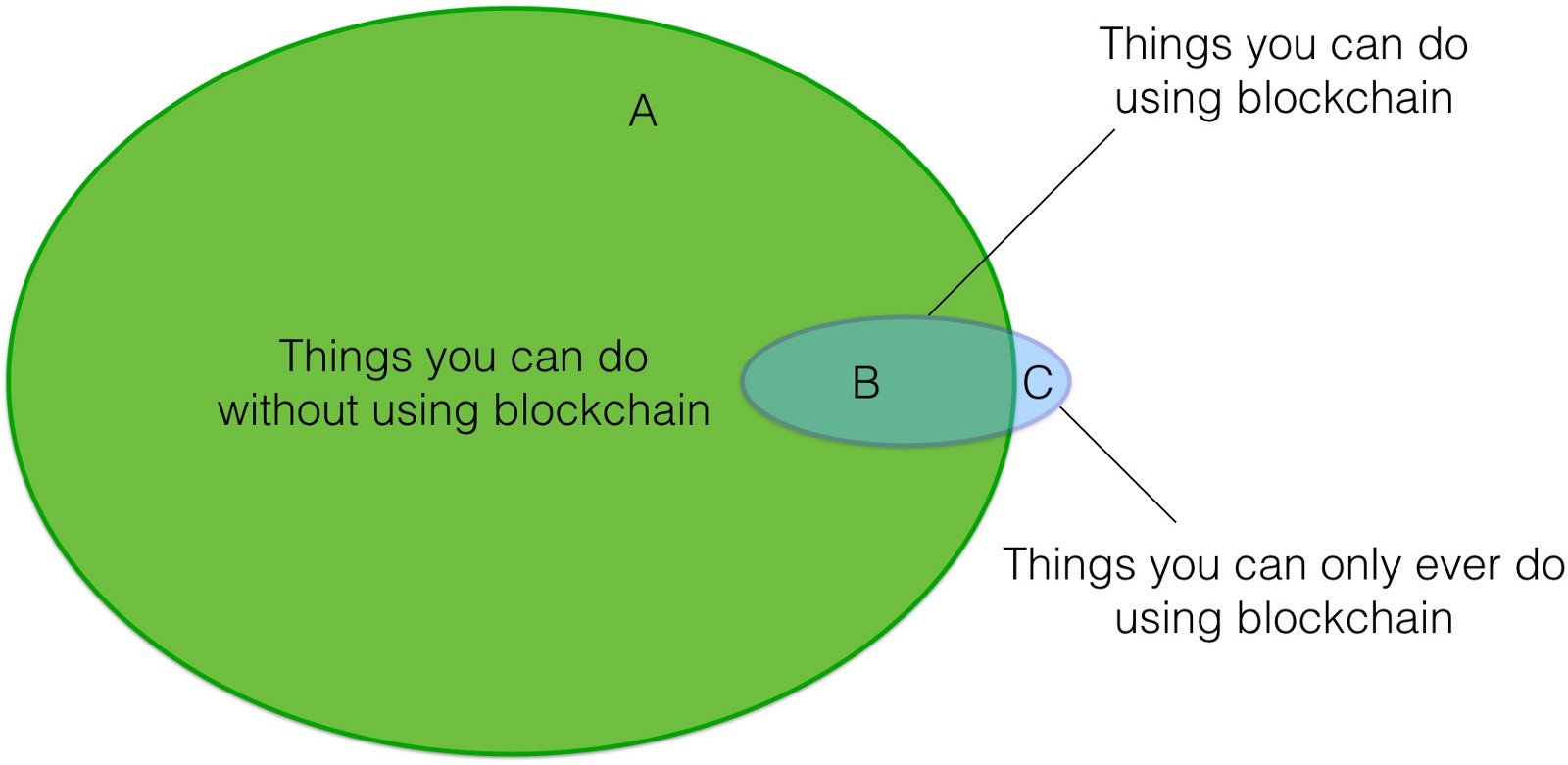It was a simple question, but the real doozys often are.
“What is it that makes something a thing you could only do using blockchain?” asked user grupiotr on the /r/ethereum subreddit, posting a Venn diagram to illustrate the question.
The chart was no more complex than the question itself: first an oval of forest green, the verdant expanse of things that can be done without blockchain—that was A. Next a muted blue, B—the overlap, the in-between, the things that may or may not use blockchain according to whim. But C, ah, C—that pale protuberance, that untainted zone, a remote peninsula jutting into the wild yonder—C was the set of things that can be done with blockchain, and blockchain alone.

The geography of C was controversial: “Should say probably not to scale,” wrote grupiotr in the comments, potentially undermining the work no sooner than it had been published. Perhaps the creator was a trickster. Or maybe a prophet, spinning tales of a promised land seen through the mists of a vision, testing the faith of those with conviction enough to follow along on the quest.
Jokes aside, the search for C and arguments about its size are central to the blockchain industry. Claims that blockchain will “change everything forever” hinge on C enclosing a large area, solving a multitude of problems which are unsolvable in any other way. On the other hand, skeptics about the revolutionary nature of blockchain believe that C doesn’t really exist outside of B: blockchain is one possible solve for a certain class of problems, but isn’t fundamentally unique.
Bitcoin, the first large-scale blockchain project, really did solve a set C problem: the maintenance of a global, decentralized ledger that would allow peer-to-peer cash transfer without the need for a central regulating authority. Since the ICO boom, most blockchain startups have tried to convince investors that a problem in set A is actually in set B, and ideally in set C. But it’s not always obvious why industries like real estate management, health insurance, e-sports betting, or any of the other 187 things the blockchain will fix need to be decentralized in the first place. (As user TheSultanOfSwagger wrote in response to the original post, “C is distributed systems that require consensus on event timestamps. B is where people will waste billions of dollars building shitty versions of things that could just be A.”)
If the other replies to grupiotr’s question are representative, among the Ethereum Reddit community there is no clear consensus as to which things can only be done with blockchain. Technology is not a panacea, after all, and the majority of developers, entrepreneurs, and academics who work with decentralized ledgers would probably say as much. But nonetheless, like El Dorado, the myth of a perfect blockchain use-case persists—and many a brave man or woman yet will find themselves caught in the desperate search for C.